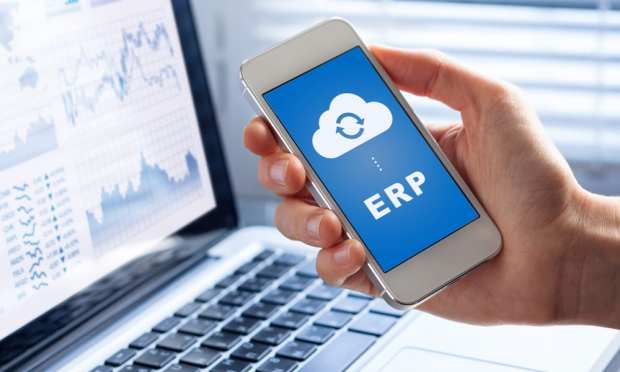The ERP Shifts From Record Keeper To Crystal Ball

The enterprise resource planning (ERP) system is a staple of large enterprises that have enough complexity in their internal processes to warrant the implementation of an equally complex tool. Despite the technological, and often financial, burden of ERPs, they’re considered vital technologies for major corporations in need of a central repository of data to support a range of functions, from procurement to accounting.
The concept of centralizing data can be beneficial to businesses of all sizes, but historically, smaller companies have been shut out of this offering.
That’s no longer the case, according to Cegid Head of Portfolio Marketing Jean Huy, in a recent conversation with PYMNTS. “It’s associated with long deployments, costly software and mostly large enterprises,” he said. “But the cloud and technology changed all that.”
The cloud has introduced the affordability and flexibility of ERP technologies, opening the door for small businesses to capture the benefits of centralizing their data sources. But the evolution of ERP doesn’t stop there, said Huy, with new challenges in data aggregation and analytics encouraging a new role for the tool as more SMBs embrace adoption.
Expanding Data Capture
Traditional ERP systems for large enterprises tended to focus on centralizing data across a company’s own internal systems, with the intention of enabling these organizations to automate more of their processes.
But as the ERP embraces the cloud and broadens its scope of business end users, Huy said there is another major change in the market.
“More data you need to collect is coming from external sources. That’s the biggest shift I see,” he said. “Now, by some estimates, over 70 percent of the data a business needs to process is coming from external sources – customers, suppliers and the supply chain. SMBs aren’t ready for that.”
There are not only IT challenges associated with capturing data from business partners. According to Huy, small businesses are also struggling to manage issues like data security and privacy, as well as streamlining data collection when information gathered from external sources is presented in a variety of formats from multiple systems.
Driving Collaboration
This reality has forced ERP innovators to prioritize flexibility and connectivity. Whereas traditional ERP systems within large organizations forced a business user to adopt only one software provider, today’s ERP solutions must encourage application programming interface (API) integrations with other systems and software providers to encourage seamless data collection.
This is particularly important for small businesses, said Huy, as SMBs are now able to pick and choose which technologies will best serve their needs across a range of internal processes.
Cegid strategizes industry collaboration with its small business ERP solution, XRP Flex, having recently announced a partnership with process automation firm Esker. The companies are integrating their platforms via API to streamline data sharing and help joint small business users accelerate their accounts payable (AP) processes.
But in addition to promoting faster invoice payments, Huy said the data integration allows XRP Flex to support another key shift in the ERP industry: Not only does the centralizing of data support automation of internal processes, but the tool increasingly enables deeper analytics of that information to drive actionable insights.
“The value of the system is to be able to run your business and connect your entire ecosystem of suppliers, partners and employees to accelerate internal processes,” he said. “The value prop we’re focusing on with Esker is to make the most of the data you collect to adapt and optimize your supply chain based on that data.”
Looking Ahead
As adoption barriers to ERP come down, businesses of all sizes are seeking to obtain more value from the tool as a central hub of valuable data. The ability to wield that data to drive business strategy is now a top priority for the c-suite.
The modern ERP allows firms “to digest data and understand it, and make the most of it, and get the insight you need to adapt your business model,” said Huy. “The system helps businesses by providing not just APIs to connect their variety of data sources and applications, but by making sense of that data to take it into account in their own KPIs.”
ERP solution providers can’t stop there, however, as the role of the enterprise resource planning system continues to evolve.
Today, Huy said the ERP is like a very accurate mirror, reflecting back to the enterprise a representation of where the company has been in the past, based on historical data. Moving ahead, he said, the goal of the ERP will be to not only provide that past view of performance, but also to actually aid organizations in looking ahead and making informed decisions about the future of their businesses.
Artificial intelligence (AI) and big data will be important factors in supporting the ERP’s journey toward this goal.
“The challenge ahead is collecting data from external sources and making sense of it to give the ability to look ahead, anticipate customer needs, problems in the supply chain, the quality of a supplier before issuing a purchase order – not after,” said Huy. “That’s how the ERP is evolving today: from looking in the mirror to looking ahead.”
